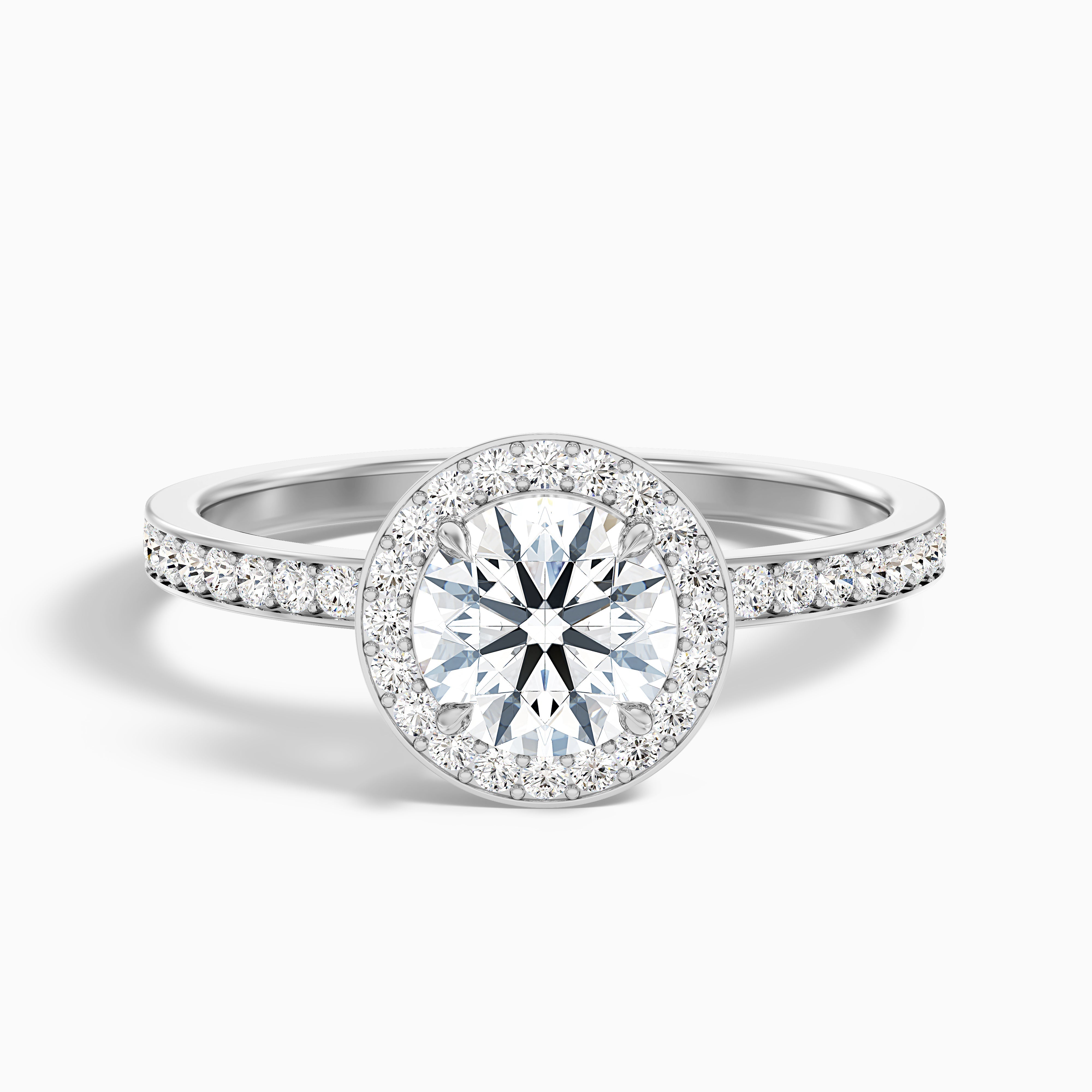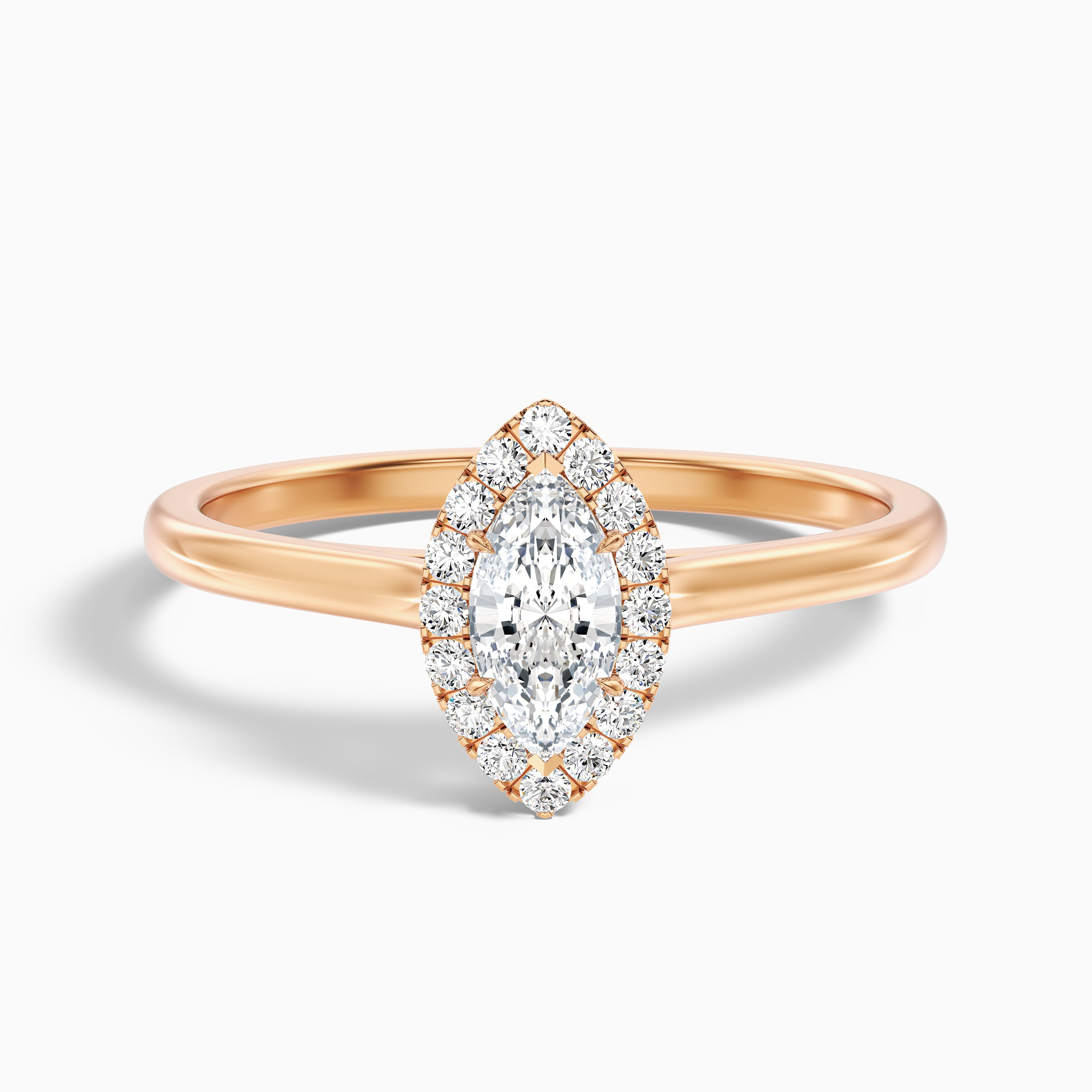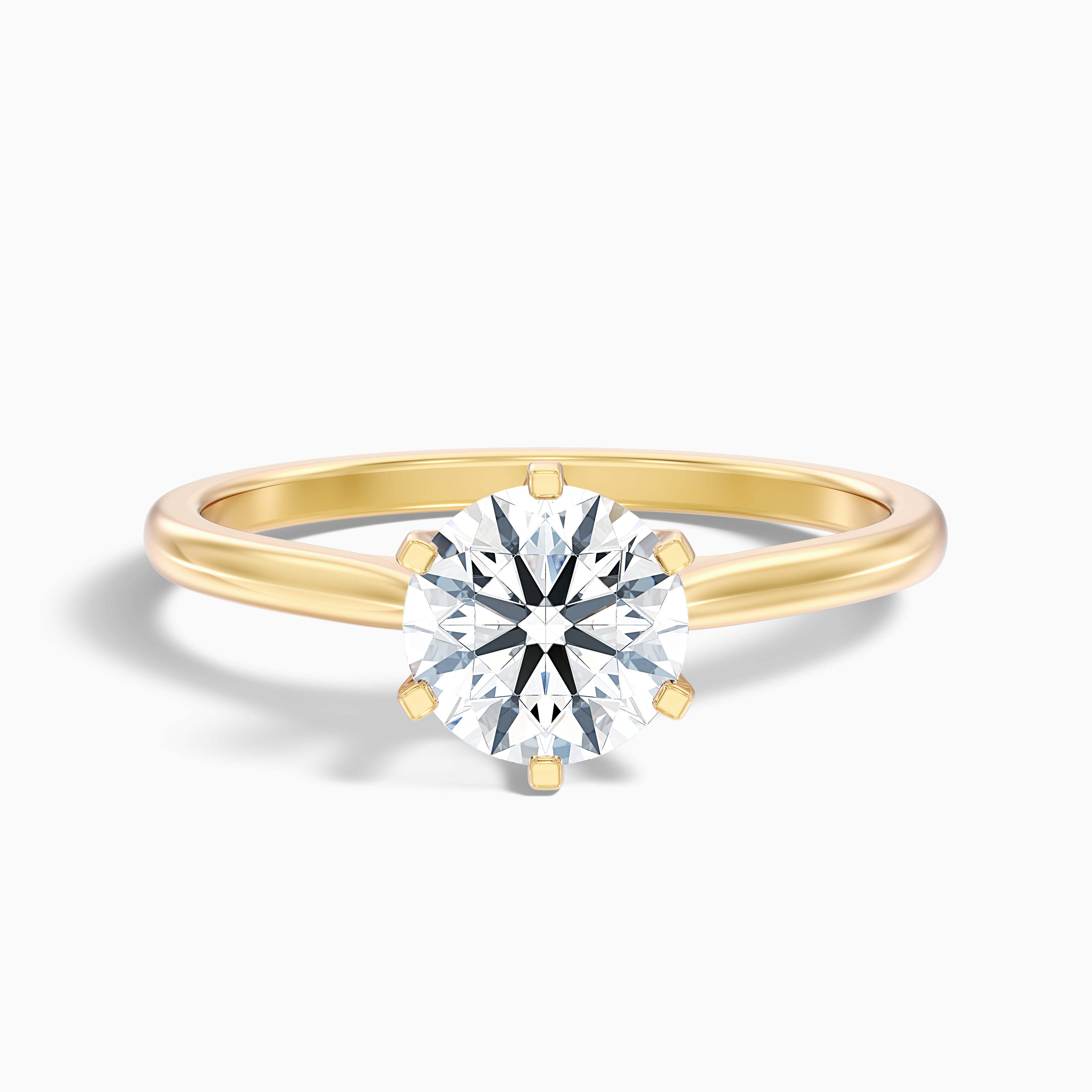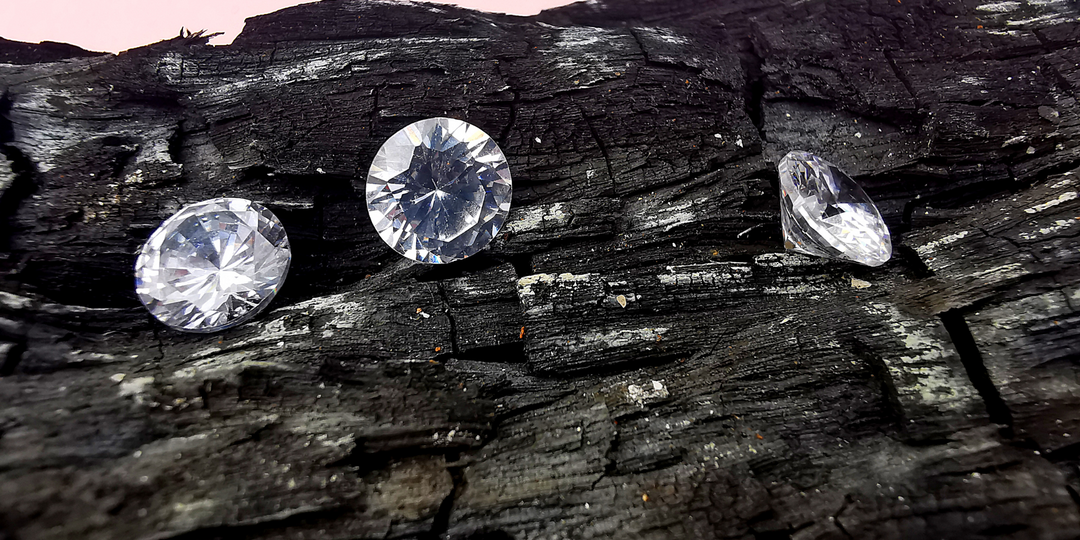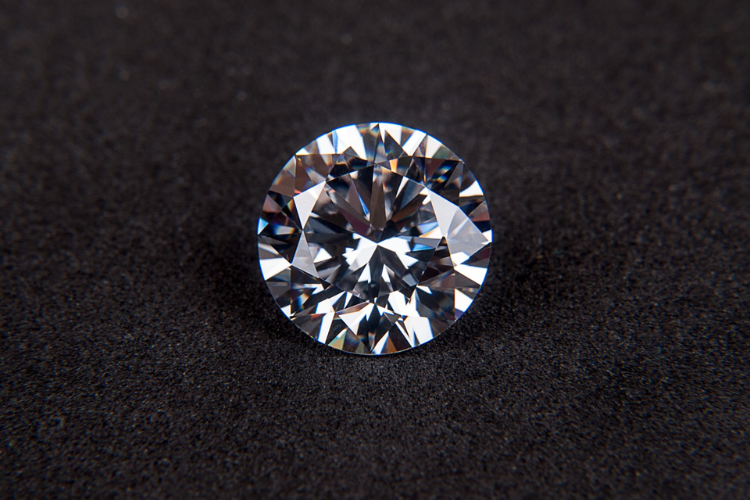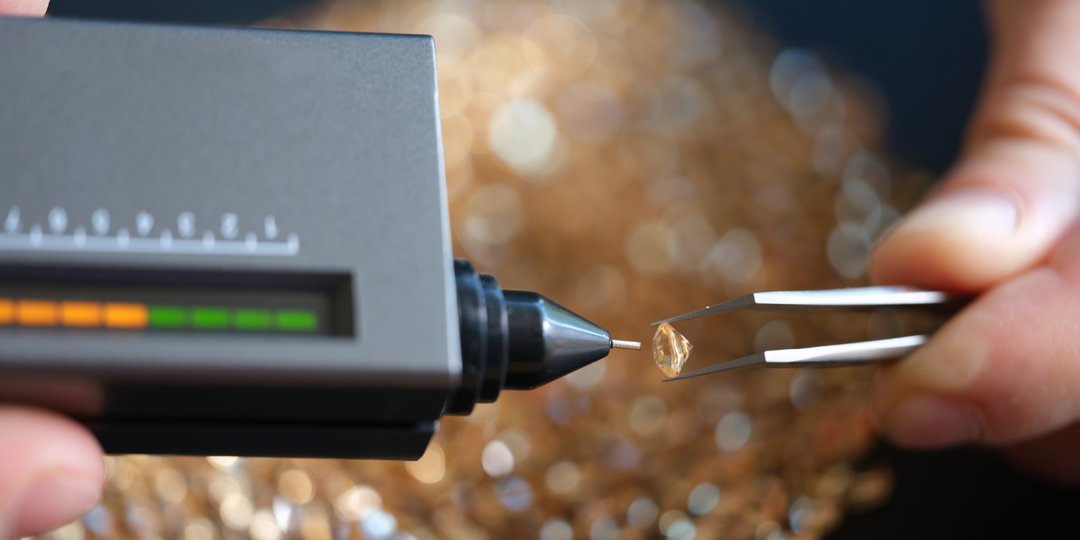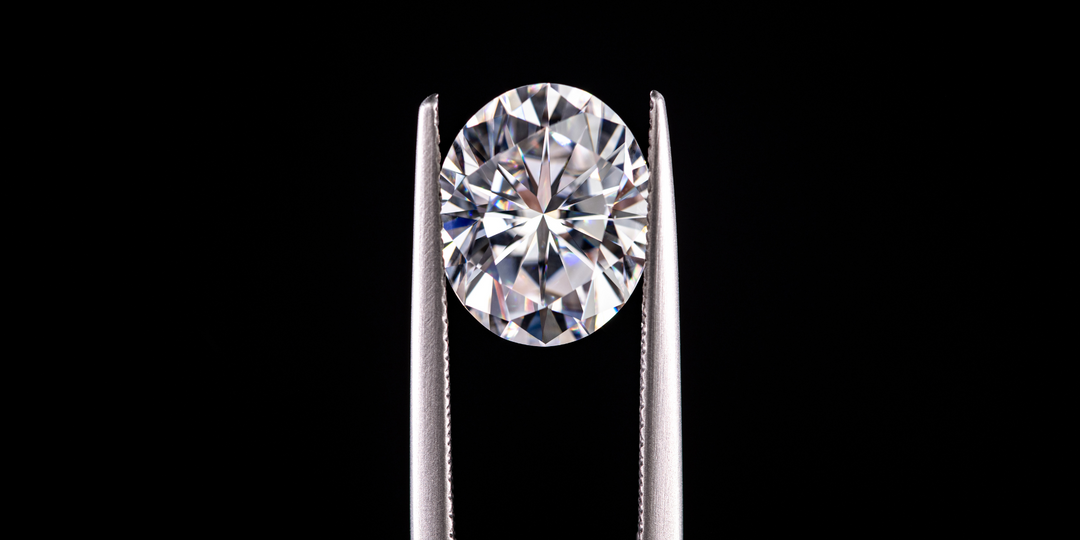What Are the Pros and Cons of Lab Grown Diamonds?
In recent years, lab grown diamonds have captured the attention of eco-conscious consumers and jewelry enthusiasts alike. Are they a sustainable alternative, or do they come with hidden drawbacks? This blog post will explore the pros and cons of lab grown diamonds, helping you make informed decisions that align with your values and desires.
What Are Lab Grown Diamonds?
Lab grown diamonds, also known as synthetic or man-made diamonds, are crafted in labs using tech that mimics how natural diamonds are formed deep in the Earth. There are two main ways to do this: High Pressure High Temperature (HPHT), where carbon is subjected to high pressure and heat, and Chemical Vapor Deposition (CVD), where a diamond seed is placed in a chamber with carbon-rich gases. These gases break down and deposit carbon onto the seed, building a diamond layer by layer.
What's cool is that these diamonds are just like natural ones in terms of chemistry, physics, and looks—they shine just as brightly. You need special equipment to tell them apart from natural diamonds. They're a hit in diamond jewelry like engagement rings and earrings, and they're also used in industries because of their toughness and ability to conduct heat.
Pros of Lab Grown Diamonds
1. Cost-Effectiveness
Lab grown diamonds are a much more budget-friendly option compared to natural ones. They're generally 60-85% cheaper, meaning you can snag bigger or higher-quality stones without breaking the bank. This is thanks to efficient production methods like CVD, which use fewer resources and energy.
Plus, with less environmental impact and ethical benefits, lab grown diamonds are perfect for those who care about the planet. So, if you're looking for high-quality jewelry without a hefty price tag, these diamonds are worth considering!
2. Ethical and Sustainable
Lab grown diamonds are all the rage these days because they’re ethical and sustainable. Unlike traditional mining, which can harm the environment and raise human rights concerns, these gems are created in labs using the latest tech. That means no harmful mining practices, and less deforestation, soil erosion, and water pollution. Plus, they’re conflict-free, so you don’t have to worry about bad labor practices or conflicts. If you’re passionate about the environment and ethical sourcing, lab grown diamonds let you enjoy luxury without the guilt.
3. High Quality and Purity
Lab grown diamonds are all about top-notch quality and purity. Since they're made in controlled settings, they usually have fewer imperfections than mined diamonds. Thanks to advanced tech, these lab grown gems have the same chemical, physical, and optical properties as natural ones, making them almost impossible to tell apart, even by experienced gemologists.
This precision means lab grown diamonds are not only stunning to look at but also consistently high quality. They're a great pick for jewelry lovers and collectors who want perfect and reliable gemstones.
4. Availability of Customization
Lab grown diamonds are perfect for anyone who loves personalized jewelry. Since they're made in a controlled environment, you can easily customize their size, shape, color, and clarity to fit your style. This means you can create unique pieces that truly reflect your taste.
Whether you're designing an engagement ring, picking out a special gift, or building a bespoke jewelry collection, the ability to customize these diamonds makes each piece one-of-a-kind. They're a hit with discerning buyers and jewelry enthusiasts!
5. Technological Advancements
Lab grown diamonds have come a long way thanks to some amazing tech advancements, making these gems more accessible and affordable for everyone. Techniques like CVD and HPHT have been fine-tuned to create diamonds that look just like natural ones. These methods give us more control over the growth process, leading to diamonds with fewer impurities and consistent quality.
Plus, with ongoing research, we're even starting to create larger and more complex diamond structures. This progress not only boosts the quality and variety of lab grown diamonds but also cuts down on production costs, making them a great choice for both consumers and industry pros.
Cons of Lab Grown Diamonds
1. Lower Resale Value
One downside to lab grown diamonds is their lower resale value compared to natural ones. Sure, they come with perks like ethical sourcing and customization, but the market for selling these diamonds is still growing. So, if you ever decide to sell your lab grown diamond, you might not get back as much as you initially paid.
People often see lab grown diamonds as less rare, which doesn’t help their resale value. If you’re an investor or collector focused on keeping long-term value, this is something to think about when picking between lab grown and natural diamonds.
2. Perception as “Synthetic”
One of the significant drawbacks of lab grown diamonds is their perception as “synthetic.” Despite being chemically and physically identical to natural diamonds, lab grown diamonds often face skepticism and prejudice from certain consumers and industry professionals.
A lot of folks link natural diamonds with authenticity and tradition, so lab grown diamonds might seem less "real" or genuine to them. Natural diamonds are often seen as symbols of enduring love and commitment, thanks to their natural origin and rarity, which lab grown diamonds might not have.
The word "synthetic" can have a negative vibe, making people think of something artificial or inferior, which affects how they're seen in the market and can lead to a lower resale value. Plus, people love natural diamonds for their uniqueness and the story behind their formation, while lab grown diamonds, made in controlled environments, might not offer the same sense of exclusivity and prestige.
There's also not a lot of widespread understanding about lab grown diamonds. Misconceptions about their quality and value are still out there, which can turn off potential buyers who might otherwise appreciate their benefits.
3. Limited Investment Potential
Lab grown diamonds are cool, but when it comes to investment, they don't quite match up to natural ones. They tend to have lower resale value because natural diamonds are seen as rarer and more prestigious. Plus, since it's easier to produce lab grown diamonds in large quantities, the market can get flooded, which can drop their prices.
We also don't have a lot of historical data on lab grown diamonds, making it tricky to predict their long-term value. And as tech keeps improving, the cost of making lab grown diamonds will likely go down, making them even less appealing for investment. That's why natural diamonds are often considered a more stable and valuable option.
4. Limited Availability of Larger Sizes and Fancy Colors
One of the downsides of lab grown diamonds is the limited availability of larger sizes and fancy colors. While lab grown diamonds have come a long way in replicating natural diamonds, there are still challenges in growing larger carat weights and a wide range of colors.
Lab grown diamonds typically top out at 3 carats for traditional shapes due to the complexity of the process. Growing larger diamonds requires more time and precise conditions which can be hard to maintain. So finding lab grown diamonds above this size is rare and often comes with a higher price tag.
When it comes to fancy colors, the selection is more limited with lab grown diamonds compared to natural diamonds. Producing specific colors like vivid blues, pinks or greens requires precise control over the growth environment and introducing certain elements.
Achieving this is hard so the selection of fancy colored lab grown diamonds is narrower. For consumers looking for larger diamonds or specific fancy colors, this is a big drawback.
Comparing Lab Grown and Natural Diamonds
| Aspect | Natural Diamonds | Lab Grown Diamonds |
|---|---|---|
| Origin and Formation | Formed deep within the Earth’s mantle over billions of years, brought to the surface through eruptions. | Created in laboratories using HPHT or CVD methods, mimicking natural conditions in weeks. |
| Chemical and Physical Properties | Composed of carbon atoms in a crystal lattice, may contain trace elements affecting color. | Also composed of carbon atoms in a crystal lattice, usually purer in composition. |
| Cost and Value | Generally more expensive, holds value better due to rarity and historical significance. | Typically 60-85% less expensive due to shorter production time and lower overhead costs. |
| Environmental and Ethical Considerations | Mining can have environmental impacts and human rights issues. | Considered more ethical and environmentally friendly, avoiding mining-related concerns. |
| Aesthetic and Market Perception | Visually indistinguishable without specialized equipment, carries unique allure and history. | Can be cut and polished to the same standards, still often seen as less prestigious. |
Factors to Consider When Choosing Lab Grown Diamonds
When choosing lab grown diamonds, there are several important factors to consider to ensure you get the best quality and value for your purchase:
- Cut and Shape: The way a diamond is cut impacts how much it sparkles. You've got lots of shapes to choose from, like round, princess, and cushion. Pick one that matches your style and what you like.
- Color Grading: Lab grown diamonds come in a range of colors, from totally colorless to a bit tinted. They’re graded on a scale from D (colorless) to Z (light color). The higher grades (D-F) are more valuable.
- Clarity: This is all about how flawless the diamond is, looking at any tiny imperfections. Lab grown diamonds usually have fewer of these than natural ones, but you’ll still want to check the clarity grade.
- Carat Weight: This is just the size of the diamond. Bigger diamonds are less common and pricier. Think about your budget and what size suits you best.
- Certifications and Transparency: Make sure your diamond comes with a certification from a trusted lab, like the GIA or IGI. This confirms the diamond’s quality and authenticity.
- Cost: Lab grown diamonds often cost 60-85% less than natural ones, making them a more budget-friendly option. You could even end up with a bigger or better-quality diamond without breaking the bank.
- Sustainability Practices: These diamonds are seen as more eco-friendly than mined ones. They leave a smaller carbon footprint and avoid the ethical issues tied to mining.
- Comparison Shopping: Check out different retailers to compare prices and quality so you get the best deal. Don’t forget to look at customer reviews and ratings to see how reliable the seller is.
By considering these factors, you can make an informed decision and choose a lab grown diamond that meets your expectations in terms of quality, ethics, and budget.
Who Should Consider Lab Grown Diamonds?
Lab grown diamonds are becoming an increasingly popular choice for a variety of consumers. Here are some groups who might particularly benefit from considering lab grown diamonds:
1. Eco-Friendly Shoppers
If you’re someone who cares about the planet, lab diamonds are a great fit. They’re made with way less environmental impact than mined ones. Mining can mess up the land and pollute water, but lab grown diamonds are produced in controlled settings, so fewer ecological headaches.
2. Ethical Consumers
Worried about the dark side of diamond mining, like human rights abuses or conflict diamonds? Lab grown diamonds are an awesome guilt-free choice. They’re created without the labor exploitation that often comes with traditional diamond mining.
3. Savvy Spenders
Looking to save money? Lab grown diamonds are usually 60-85% cheaper than natural ones. So, you get more bang for your buck without skimping on quality or style.
4. Tech Lovers
If you’re into tech and innovation, you’ll dig lab grown diamonds. They’re made using cutting-edge tech that mimics how natural diamonds form, resulting in gems that are just as stunning physically and chemically as mined diamonds.
5. Jewelry Fans
Love bling? Lab grown diamonds shine just as bright and are just as durable as natural ones. Whether it’s for that perfect engagement ring, a dazzling pair of earrings, or a beautiful pendant, these diamonds offer a gorgeous and sustainable option.
6. Trendsetters
Lab grown diamonds are trendy and catching on fast. Opting for them can make a statement about being modern and forward-thinking, aligning with today’s values of sustainability and ethical consumption.
7. Young Couples
Younger folks, especially those between 21-40, are all about lab grown diamonds for engagement rings and other important jewelry. They’re often more clued into environmental and ethical issues, making lab grown gems a smart choice.
Lab grown diamonds are a compelling alternative to traditional ones, appealing to all sorts of preferences and values. Whether you’re eco-conscious, ethically minded, budget-savvy, or just love innovation and beauty, these diamonds are definitely worth a look.
Conclusion
Lab grown diamonds are like the perfect blend of technology, ethics, and beauty. They're not just easy on the wallet but also sustainable, making them a top pick for today's shoppers. Of course, some folks might have mixed feelings about them or question their investment value, but their real allure is how they could shake up the jewelry scene.
By considering the upsides and downsides of lab grown diamonds, you can make choices that fit your values and goals. Whether you're drawn to their ethical perks or just love their sparkle, lab grown diamonds are a fresh, shiny path in the world of fine jewelry.

